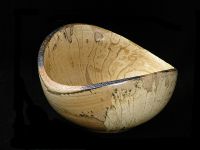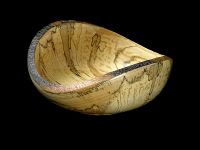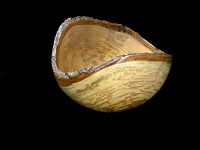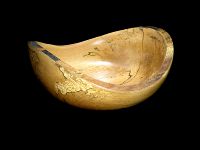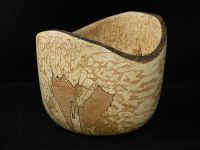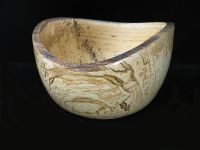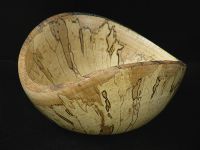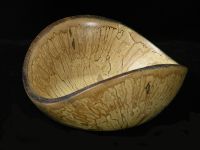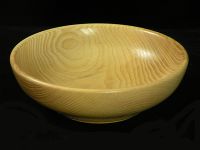________
________Rough walk through of my method used for N E Bowl for Steve.
________
________
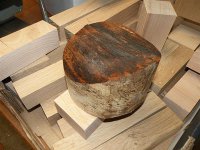
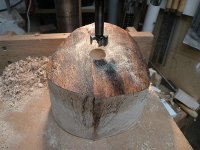
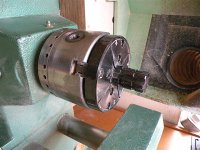
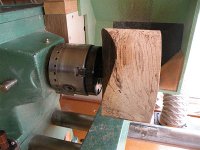 ________
________Rough Blank and mounting method
________
________
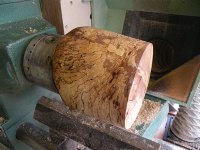
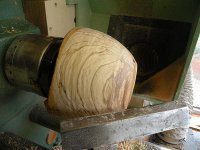
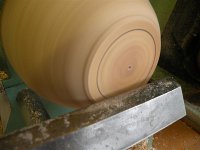
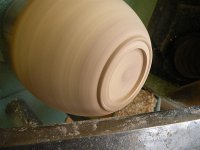 ________
________True up cylinder/base, form basic outer shape,mark mounting socket, form socket and foot, finish outer turning.
________
________
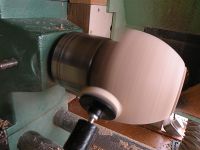
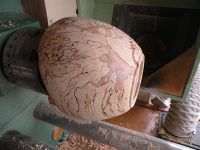
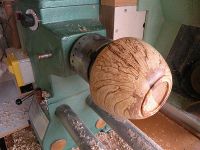
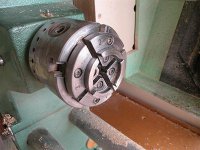 ________
________Finish Sand, including chuck recess, using higher speed than normal to reduce catch risk on wings, coat with sanding sealer and change chuck jaws.
________
________
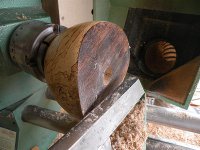
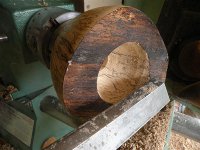

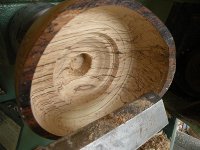 ________
________Start by removing Centre but not much deeper than wing height to maintain wing support.
________Work down the sides of the wings with a 30-35 deg nose bevel bowl gouge, keeping bevel parallel to outer face.
________I run lathe at 2000+RPM for this as it reduces risk of tool bounce.
________
________
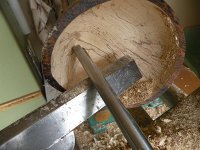
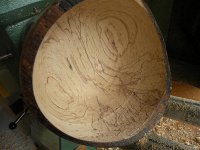
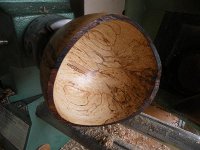 ________
________Change to a 45-50 deg nose bevel bowl gouge to remove rest of centre, to avoid fouling wings and maintain bevel contact.
________Finish sand and coat with sanding sealer.
________
________
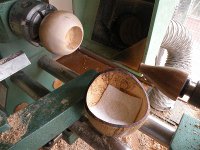
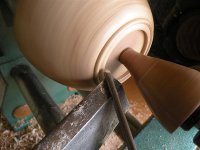
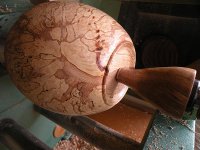 ________
________Reverse mount with plain Nyweb for friction and padded revolving centre.
________Tidy up mounting socket with 6mm bowl gouge, sand finish and seal.
________
________
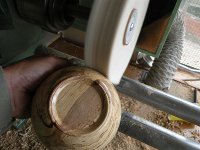
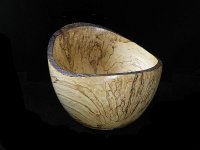
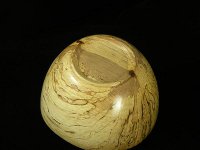 ________
________Buff with White Diamond, you can see the shine at this stage, Finish Buff with Wax
________Smaller Buffing wheels used for inner at this size and depth but shallower pieces can be done with large mops.
________I normally do these sort of pieces in batches of 6+ to avoid changing jaws, mops etc. any more than necessary.
Edit: Bevel angles references adjusted to comply
with these Charts

































